1930s
Mystery Gadget 71
This was equipment aboard a large ocean liner. What did it do?Answer is here, or after the jump.

More in extended >>
Posted By: Paul - Sun Mar 03, 2019 -
Comments (5)
Category: Oceans and Maritime Pursuits, Technology, 1930s
Jelly-Strength Tester
Invented in 1932 by C.R. Fellers and J.A. Clague of Massachusetts State College. It's technical name is the Fellers-Clague Penetrometer.As is explained in The Complete Book on Gums and Stabilizers for Food Industry, there are two ways of testing the strength of jelly: 1) "tests in which the elastic limits (breaking strength) of the jellies are exceeded and the jelly is ruptured", or 2) "tests measuring deformation (sag) of jellies without exceeding the elastic limit."
The Fellers-Clague Penetrometer is of the first type.
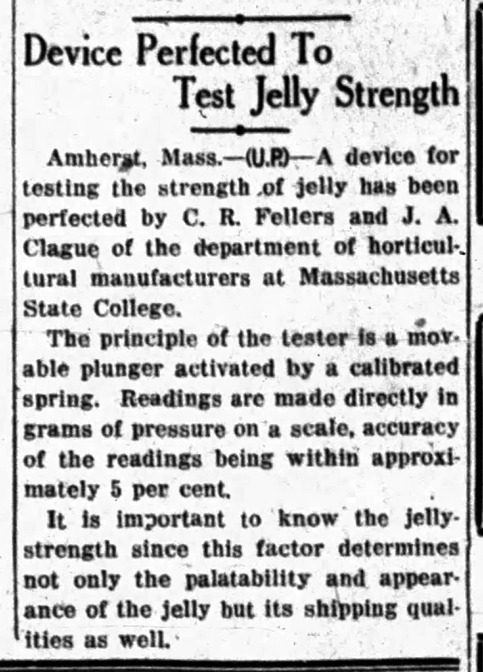
Latrobe Bulletin - July 13, 1932

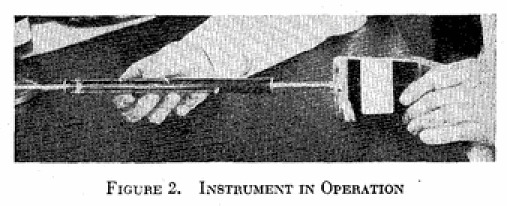
Source: Industrial and Engineering Chemistry, Analytical Edition
Posted By: Alex - Sat Mar 02, 2019 -
Comments (3)
Category: Food, Jello, Inventions, 1930s
Self-described Suicide

Source.
Posted By: Paul - Tue Feb 12, 2019 -
Comments (3)
Category: Suicide, 1930s
Follies of the Madmen #409
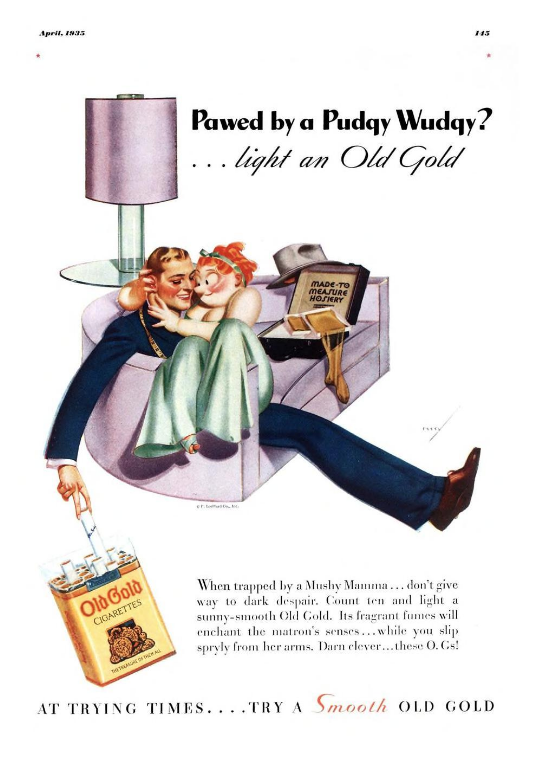
The man and the women are plainly inhabitants of totally different cartoon universes, the inverse relationship of Roger and Jessica Rabbit. This rather destroys the impact of the whole ad.
Source.
Posted By: Paul - Tue Jan 29, 2019 -
Comments (6)
Category: Business, Advertising, Tobacco and Smoking, Comics, 1930s
“Die British and Remain British”
The 1930's version of British remainers.
The Monroe News-Star - Oct 1, 1934
Posted By: Alex - Sat Jan 26, 2019 -
Comments (0)
Category: Death, 1930s
Follies of the Madmen #406
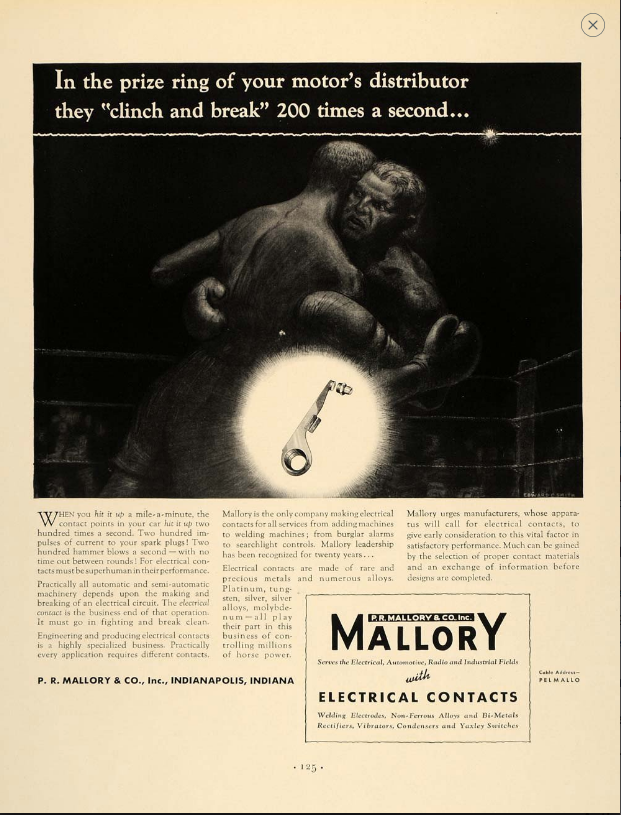
Joe Louis lives in your car's engine.
Source.
Posted By: Paul - Tue Jan 15, 2019 -
Comments (1)
Category: Business, Advertising, Sports, Technology, 1930s
Artwork Khrushchev Probably Would Not Have Liked 18
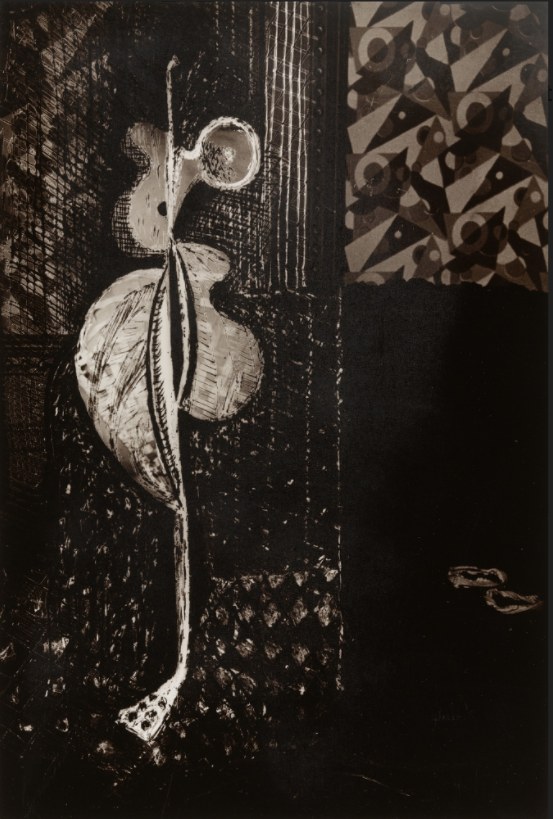
Brassaï (Gyula Halász)
Prostitute Undressing
1934-35
Posted By: Paul - Tue Jan 08, 2019 -
Comments (2)
Category: Art, Avant Garde, Sexuality, 1930s, Russia
Bugsy Siegel and Atomite
One of the mobster's lesser-known rackets.Source of text.
Di Frasso and Siegel pictured below the text.
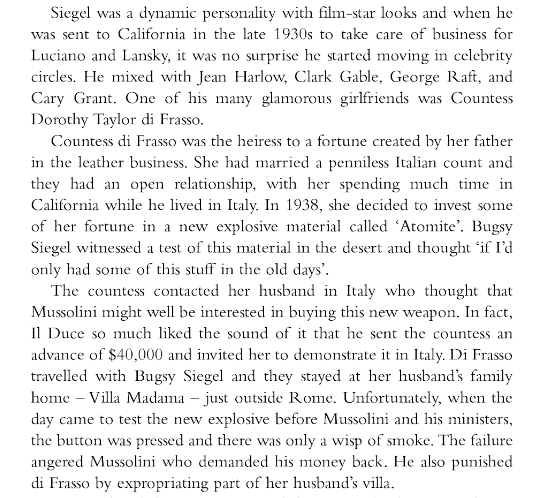
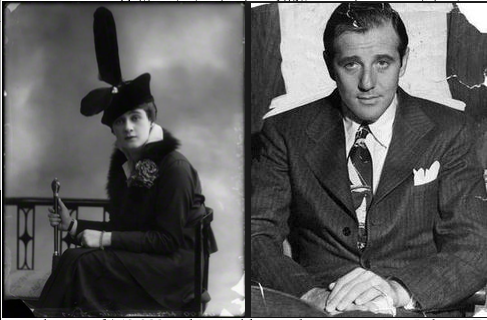
Posted By: Paul - Sat Dec 01, 2018 -
Comments (1)
Category: Crime, Dictators, Tyrants and Other Harsh Rulers, Frauds, Cons and Scams, 1930s, Europe, Weapons
The year of multiple Thanksgivings
Thanksgiving used to be celebrated on the final Thursday in November until 1939, when President Roosevelt decided to move it back a week in order to help retailers by lengthening the pre-Christmas shopping season. Not everyone was happy with this decision. As wikipedia notes:So Governor Lee O'Daniel declared that Texas would celebrate 2 official days of Thanksgiving, but some parts of the state weren't satisfied with that. The city of Monahans decided they were going to have 3 Thanksgivings: on the 16th, 23rd, and 30th. Then Harlingen, Texas upped the ante by declaring they were going to have a full 8 days of Thanksgiving. They designated every day from the 23rd to the 30th as an official day of Thanksgiving.
That sounds like a swell idea to me. A full week of gluttony!

Arizona Republic - Nov 2, 1939

Warren Times Monitor - Nov 16, 1939

McAllen Monitor - Nov 19, 1939
Posted By: Alex - Thu Nov 22, 2018 -
Comments (1)
Category: Holidays, Thanksgiving, 1930s
Charles Norman, the toddler who smoked
Charles "Mickey" Norman achieved fame in the 1930s, while only a 2-year-old, because of his love of smoking. He was known as the "puffing prodigy." For a few years the media checked back at each of his birthdays and found him still smoking. Then they eventually lost interest... until his 18th birthday, when they checked and found he was still smoking, and quite healthy. The last news story about him I could find was when he was 25. Not clear what became of him after that. He might still be alive. If so, he'd be 87.
St. Louis Star and Times - July 12, 1933
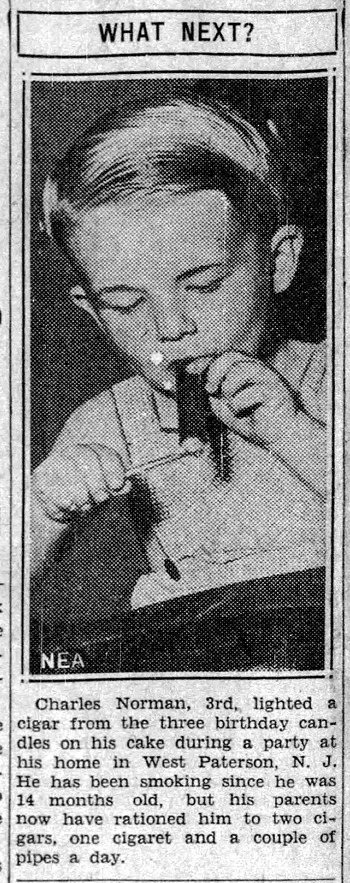
Public Opinion - July 31, 1934
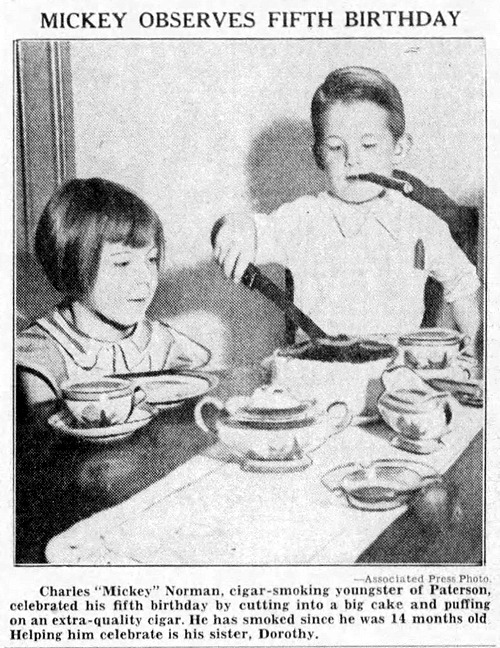
The Hackensack Record - July 29, 1936
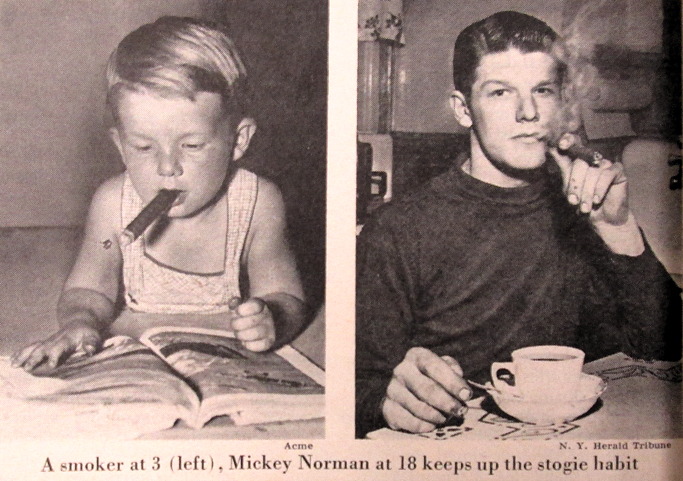
Newsweek - Mar 20, 1950
-Newsweek, Mar 20, 1950
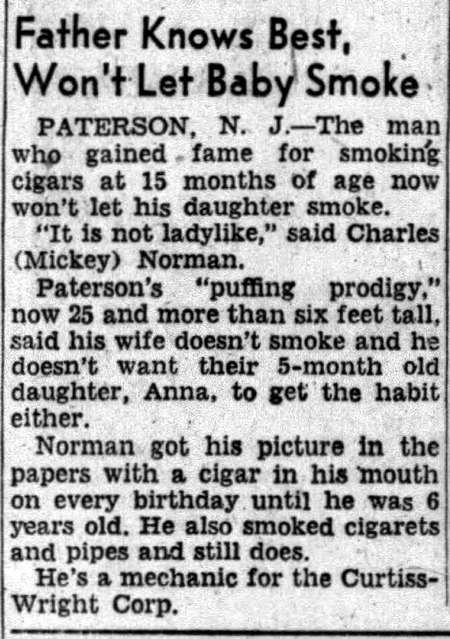
Philadelphia Inquirer - July 30, 1956
Posted By: Alex - Sat Nov 17, 2018 -
Comments (2)
Category: Smoking and Tobacco, 1930s

| Who We Are |
|---|
| Alex Boese Alex is the creator and curator of the Museum of Hoaxes. He's also the author of various weird, non-fiction, science-themed books such as Elephants on Acid and Psychedelic Apes. Paul Di Filippo Paul has been paid to put weird ideas into fictional form for over thirty years, in his career as a noted science fiction writer. He has recently begun blogging on many curious topics with three fellow writers at The Inferior 4+1. Contact Us |




